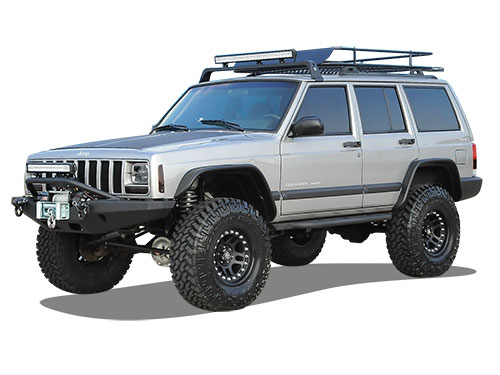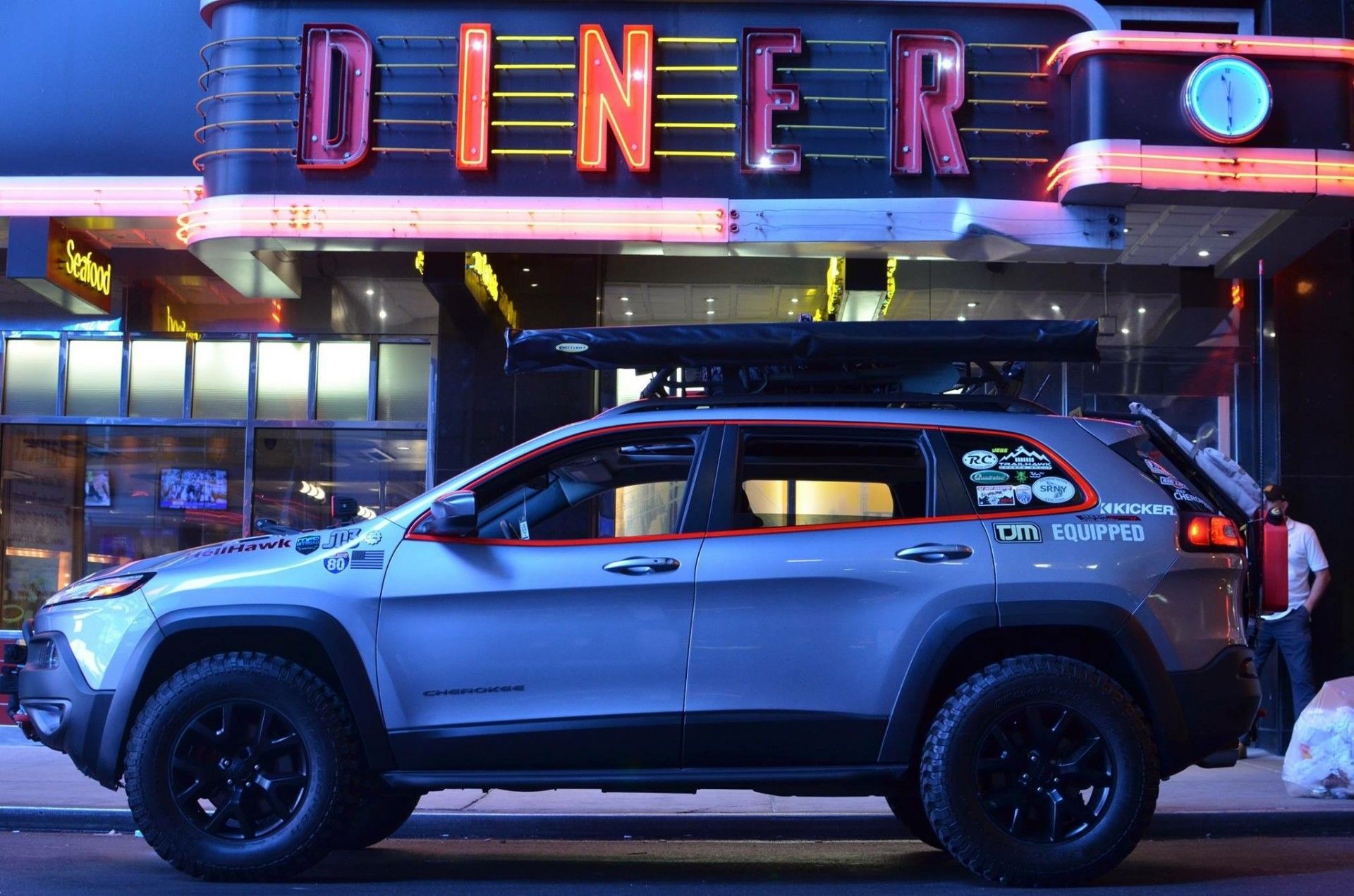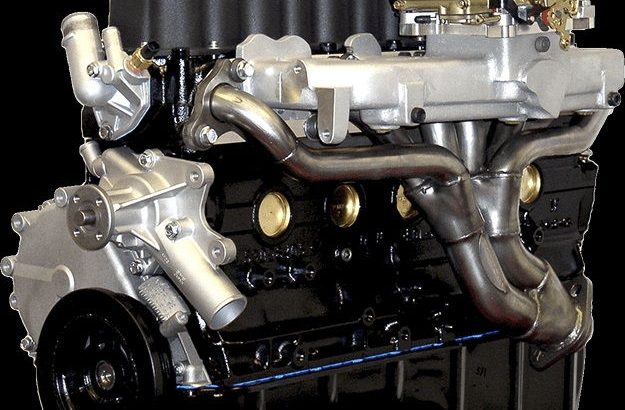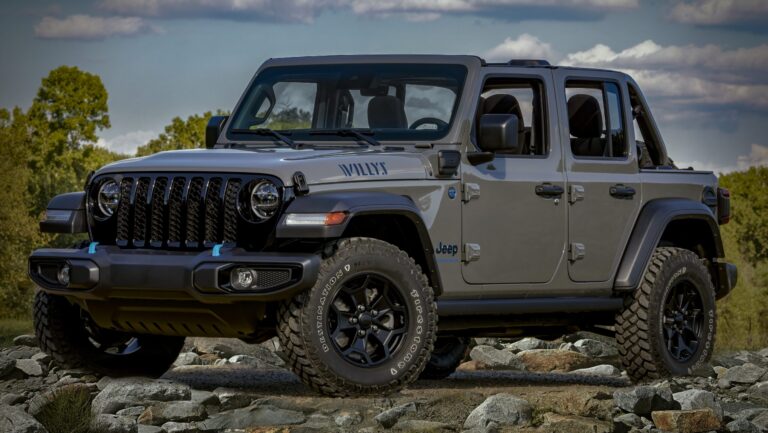Jeep Cherokee Lift Kits: Elevating Your Adventure
Jeep Cherokee Lift Kits: Elevating Your Adventure jeeps.truckstrend.com
The Jeep Cherokee, a name synonymous with adventure, capability, and rugged versatility, has captivated enthusiasts for decades. From the iconic XJ generation to the modern KL, Cherokees have consistently proven their mettle both on and off the pavement. However, for many owners, "stock" is just a starting point. This is where Jeep Cherokee Lift Kits come into play – a fundamental modification that not only transforms the vehicle’s aesthetic appeal but significantly enhances its off-road prowess.
A lift kit, in essence, is a collection of components designed to increase the ground clearance of your vehicle. For a Jeep Cherokee, this translates into the ability to tackle more challenging terrain, accommodate larger tires for improved traction, and achieve a more aggressive, commanding stance. Whether you’re an avid off-roader aiming for rock-crawling supremacy or simply seeking a more capable and visually striking daily driver, understanding the nuances of lift kits is the first step towards unlocking your Cherokee’s full potential.
Jeep Cherokee Lift Kits: Elevating Your Adventure
What is a Lift Kit and Why Install One on Your Cherokee?
At its core, a lift kit modifies your Jeep Cherokee’s suspension to raise its body higher off the ground. This elevation is achieved through various means, from simple spacers to complete overhauls of springs, shocks, and control arms. The primary motivations for installing a lift kit are:
- Increased Ground Clearance: This is perhaps the most significant benefit. A higher ground clearance allows your Cherokee to clear obstacles like rocks, logs, and deep ruts without damaging the undercarriage, differentials, or exhaust system.
- Accommodate Larger Tires: Lifting your Cherokee creates crucial fender clearance, enabling you to fit larger diameter tires. Larger tires provide a bigger contact patch, improving traction in loose terrain, and often feature more aggressive tread patterns for superior off-road grip.
- Improved Approach, Departure, and Breakover Angles: These angles define how steep an obstacle your vehicle can approach, leave, or traverse without scraping its front bumper, rear bumper, or underbelly. A lift kit dramatically improves all three, enhancing your off-road capability.
- Enhanced Aesthetics: Let’s be honest, a lifted Jeep Cherokee simply looks more rugged and imposing. It transforms the vehicle’s appearance, giving it a more aggressive and capable stance that turns heads.
- Better Articulation (with advanced kits): More comprehensive lift kits often include components that allow for greater wheel travel and articulation, meaning your wheels can move up and down independently to maintain contact with uneven terrain, improving stability and traction on challenging trails.

Types of Lift Kits for Jeep Cherokee: Tailoring to Your Generation and Goals
It’s crucial to understand that "Jeep Cherokee" encompasses several distinct generations, each with unique suspension designs. A lift kit for an XJ will be vastly different from one for a KL.

1. Jeep Cherokee XJ (1984-2001):
The XJ Cherokee features a solid front axle with coil springs and a leaf spring rear suspension. Lift kits for XJs are incredibly popular and varied:
- Budget Boosts (Spacer Lifts): These use polyurethane or aluminum spacers above the coil springs in the front and longer shackles or add-a-leafs in the rear. They offer 1.5-2 inches of lift affordably, mainly for aesthetics and minor tire clearance.
- Short Arm Lift Kits: The most common type, these kits typically provide 2-4.5 inches of lift by replacing coil springs, leaf springs (or full leaf packs), and shocks. They often include new control arms (fixed or adjustable) and a track bar.
- Long Arm Lift Kits: For lifts exceeding 4.5 inches, long arm kits are recommended. They replace the factory short control arms with much longer ones that mount further back on the frame. This dramatically improves suspension geometry, reducing control arm angles, enhancing ride quality, and providing superior articulation.
- Full Spring Replacement Kits: These replace all four springs (coils and leaf packs) and shocks, providing a complete suspension overhaul for improved performance and lift.

2. Jeep Liberty KJ (2002-2007) & KK (2008-2012):
These generations (marketed as Liberty in North America) feature independent front suspension (IFS) and a multi-link coil spring rear suspension. Lifting these is more complex than the XJ.
- Spacer Lifts: Similar to XJ, these use spacers for mild lifts (1-2 inches) on top of the struts/coils.
- Full Coil/Strut Replacement Kits: These replace the entire strut assembly in the front and coil springs in the rear with longer, heavy-duty versions, often paired with new shocks. These offer better ride quality and more substantial lift (2-3 inches).
- Upper Control Arms: For lifts over 2 inches, aftermarket upper control arms are often necessary to correct alignment issues caused by the lifted IFS.
3. Jeep Cherokee KL (2014-Present):
The modern KL Cherokee features independent front and rear suspension (IFS/IRS) and a unibody construction. Lifting the KL requires specific kits due to its sophisticated suspension.
- Leveling Kits/Spacer Lifts: These are typically 1-2 inch spacers that sit above the strut assembly. They are popular for leveling the vehicle’s stance or fitting slightly larger tires without extensive modifications.
- Coil Over/Strut Replacement Kits: More comprehensive kits replace the factory struts and shocks with longer, heavy-duty versions designed for lifted applications. These often provide 2-3 inches of lift and can improve ride quality and off-road performance.
- Subframe Drop Kits: For larger lifts (3 inches or more), some kits include subframe spacers to lower the entire drivetrain relative to the body, helping to correct CV axle angles that can become problematic with significant lifts on IFS/IRS vehicles.
Choosing the Right Lift Kit for Your Cherokee
Selecting the ideal lift kit involves a careful assessment of several factors:
- Your Cherokee Generation: This is paramount. Ensure the kit is explicitly designed for your XJ, KJ, KK, or KL.
- Intended Use:
- Daily Driver/Light Trails: A 1.5-2 inch spacer lift or mild coil/strut replacement kit is usually sufficient for aesthetics and fitting slightly larger tires.
- Moderate Off-Roading: A 2-3 inch full suspension kit (coil/leaf springs, shocks) will provide good ground clearance and allow for larger tires, enhancing capability without drastically altering daily drivability.
- Serious Rock Crawling/Overlanding: 3.5-6.5+ inch kits, often long arm kits for XJs or comprehensive subframe drop kits for KLs, are needed for extreme articulation and very large tires. These require significant additional modifications.
- Desired Lift Height: Be realistic. Taller isn’t always better. Excessive lift can lead to complex drivetrain issues, compromised ride quality, and higher costs.
- Budget: Lift kits range from a few hundred dollars for spacers to several thousand for complete, high-performance systems. Factor in installation costs, alignment, and potentially new tires.
- Tire Size Compatibility: Decide on the tire size you want before buying the lift. The lift height directly dictates the maximum tire size you can fit without rubbing.
- Additional Components: Larger lifts often necessitate other parts like extended brake lines, adjustable track bars, longer sway bar links, slip yoke eliminators (SYE) for XJ rear driveshafts, and new control arms to maintain proper suspension geometry and prevent vibrations. Don’t overlook these critical components.
Installation Process: What to Expect
Installing a Jeep Cherokee lift kit can range from a relatively straightforward afternoon job (for simple spacer lifts) to a multi-day project requiring specialized tools and expertise (for full suspension or long arm kits).
- DIY vs. Professional Installation:
- DIY: Possible for those with mechanical aptitude, a well-equipped garage (jack stands, floor jack, basic hand tools, torque wrench), and plenty of time. Always follow the manufacturer’s instructions meticulously. Be prepared for rusted bolts and unexpected challenges.
- Professional: Recommended for larger, more complex kits or if you lack the tools, space, or confidence. A reputable off-road shop will have the experience and equipment to do the job correctly, ensuring proper geometry and safety.
- General Steps (vary by kit/generation):
- Safety First: Park on level ground, engage the parking brake, block the wheels, and use sturdy jack stands.
- Disassembly: Remove wheels, disconnect sway bar links, brake lines (if extending), shocks, and unbolt existing springs/struts.
- Installation of New Components: Install new springs, shocks, control arms, track bar, sway bar links, and any other kit-specific components.
- Reassembly: Torque all bolts to factory specifications.
- Bleed Brakes (if lines replaced): Crucial for safety.
- Final Checks: Ensure everything is tight and clear.
- Post-Installation: A professional wheel alignment is absolutely mandatory after installing any lift kit. This corrects camber, caster, and toe angles, which are thrown off by the lift, preventing premature tire wear and ensuring safe handling.
Important Considerations & Potential Challenges
Lifting your Jeep Cherokee isn’t just about bolting on new parts; it alters the vehicle’s dynamics. Be aware of these potential challenges:
- Drivetrain Angles (especially XJ): Lifting an XJ can change the rear driveshaft angle, leading to vibrations, particularly at highway speeds. A Slip Yoke Eliminator (SYE) kit and a custom driveshaft are often necessary for lifts over 3 inches to correct this. Front CV joints on IFS vehicles (KJ, KK, KL) can also wear faster with significant lifts.
- Steering Geometry: Lifting can affect steering responsiveness and stability. An adjustable track bar is essential for XJs to re-center the axle, and a drop pitman arm might be needed for very tall lifts to maintain proper steering linkage angles.
- Brake Line Extension: Larger lifts often require longer brake lines to prevent stretching or damage during suspension articulation.
- Tire Rubbing: Even with a lift, larger tires might rub on fender flares or inner fender liners, especially during turns or suspension compression. Fender trimming or aftermarket flat fenders may be required.
- Ride Quality and Handling: While many quality kits improve ride, some budget options or overly tall lifts can stiffen the ride, increase body roll, and make the vehicle feel less stable on the road.
- Legal Implications: Some states have laws regarding maximum vehicle height, tire protrusion, and fender coverage. Check your local regulations.
- Warranty: For newer KL models, significant suspension modifications can potentially void portions of your factory powertrain or suspension warranty.
Practical Advice and Actionable Insights
- Research Thoroughly: Don’t impulse buy. Read reviews, watch installation videos, and join online forums specific to your Cherokee generation. Learn from others’ experiences.
- Buy Quality Components: You get what you pay for. Cheap kits might save money upfront but can lead to premature wear, poor performance, and safety issues down the road. Invest in reputable brands.
- Don’t Skimp on Related Parts: A lift kit is often just the beginning. Factor in the cost of new tires, wheels (if needed), alignment, and any necessary auxiliary components like an SYE, adjustable control arms, or track bars.
- Consider Your True Needs: Be honest about how you’ll use your Cherokee. A mild lift is perfectly adequate for most users and avoids many of the complexities of extreme lifts.
- Professional Alignment is Non-Negotiable: After any lift, get a professional alignment from a shop experienced with lifted vehicles.
- Test Drive and Re-Check: After installation, take your Cherokee for a test drive. Listen for unusual noises, feel for vibrations, and check steering. Re-torque all bolts after a few hundred miles.
Estimated Price Table for Jeep Cherokee Lift Kits
Please note: Prices are estimates and can vary significantly based on brand, material quality, specific components included, and market fluctuations. Installation costs are not included.
| Lift Type / Generation | Lift Height (Approx.) | Key Components (Typical) | Estimated Price Range (USD) | Notes |
|---|---|---|---|---|
| XJ Cherokee | ||||
| Budget Boost (Spacer) | 1.5" – 2" | Front coil spacers, Rear add-a-leaf/shackles | $150 – $400 | Primarily for aesthetics/mild tire clearance. May require longer shocks. |
| Short Arm Kit | 2.5" – 3.5" | Front coils, Rear leaf springs/full packs, Shocks | $500 – $1,200 | Common for moderate off-roading. May need extended brake lines, adjustable track bar, sway bar links. |
| Short Arm Kit | 4" – 4.5" | Front coils, Rear leaf springs/full packs, Shocks | $800 – $1,800 | Often requires adjustable control arms, adjustable track bar, extended brake lines, SYE + driveshaft for optimal performance. |
| Long Arm Kit | 4.5" – 6.5+" | Long control arms, Coils, Full leaf packs, Shocks | $1,800 – $4,000+ | For serious off-roading. Includes all components of 4.5" short arm, plus long arm mounts/arms. Significantly improves articulation and ride quality at higher lifts. |
| KJ/KK Liberty | ||||
| Spacer Lift | 1" – 2" | Strut spacers (front), Coil spacers (rear) | $200 – $500 | Levels vehicle, allows slightly larger tires. Ride quality remains mostly stock. |
| Full Suspension Kit | 2" – 3" | New struts (front), Coils (rear), Shocks | $700 – $1,500 | Improves ride and off-road performance. May require aftermarket upper control arms to correct alignment for lifts over 2 inches. |
| KL Cherokee | ||||
| Leveling/Spacer Kit | 1" – 2" | Strut spacers (front/rear) | $250 – $600 | Levels vehicle, allows slightly larger tires. Easiest and most affordable option. |
| Full Suspension Kit | 2" – 3" | New struts/coil-overs (front/rear), possibly control arms | $900 – $2,500 | Improves performance, better ride quality than spacers. Some kits may include subframe drop components for larger lifts to mitigate CV axle angle issues. |
Frequently Asked Questions (FAQ)
Q: How much lift do I really need for my Jeep Cherokee?
A: It depends on your goals. For aesthetics and fitting slightly larger tires (30-31 inches for XJ, 29-30 inches for KJ/KK/KL), 1.5-2 inches is often enough. For moderate off-roading and 31-32 inch tires (XJ), 3-4 inches is common. For serious rock crawling and larger tires (33+ inches XJ), 4.5 inches or more is typically required, necessitating more extensive modifications.
Q: Can I install a lift kit myself?
A: Simple spacer lifts can often be installed by a competent DIYer with basic tools. More complex full suspension kits, especially those involving new control arms, leaf springs, or subframe drops, are significantly more involved and often best left to a professional shop, particularly for the XJ’s SYE or IFS/IRS alignment challenges on newer models.
Q: Will a lift kit affect my Cherokee’s ride quality?
A: Yes, it can. Quality lift kits are designed to maintain or even improve ride quality, especially if they include new shocks and springs tuned for the vehicle. However, budget kits, very tall lifts, or kits with stiff springs can lead to a harsher ride and increased body roll.
Q: Do I need new tires after installing a lift kit?
A: Not necessarily immediately, but the primary reason most people lift their Jeep is to fit larger tires. If you don’t get larger tires, the lift might look disproportionate. Your stock tires will work, but you won’t gain the full off-road benefit of the lift.
Q: What is a Slip Yoke Eliminator (SYE) and why might my XJ need one?
A: An SYE kit replaces the stock slip yoke on the transfer case of an XJ Cherokee with a fixed yoke. This is crucial for lifts over 3 inches because lifting changes the angle of the rear driveshaft, which can cause severe vibrations. An SYE allows for a longer, stronger driveshaft with a CV joint, correcting the angle and eliminating vibrations.
Q: Will lifting my KL Cherokee void my warranty?
A: Modifying your vehicle’s suspension can potentially void parts of your factory warranty related to the suspension, drivetrain, or associated components if the failure can be directly attributed to the modification. It’s always best to check with your dealership or review your warranty terms.
Q: Is a wheel alignment necessary after lifting?
A: Absolutely! A professional wheel alignment is mandatory after installing any lift kit. Lifting alters suspension geometry, affecting camber, caster, and toe angles. Without proper alignment, you’ll experience premature tire wear, poor handling, and potential safety issues.
Conclusion
Jeep Cherokee lift kits offer a gateway to enhanced capability, striking aesthetics, and a more fulfilling off-road experience. Whether you pilot a classic XJ, a versatile KJ/KK, or a modern KL, there’s a lift kit designed to meet your needs and aspirations. From subtle leveling kits that provide a more aggressive stance to comprehensive long arm systems built for extreme terrain, the possibilities are vast.
However, the journey to a lifted Cherokee requires careful consideration. Understanding your vehicle’s specific generation, your intended use, and the potential implications of suspension modification are key to a successful outcome. By researching thoroughly, investing in quality components, and ensuring proper installation and alignment, you can transform your Jeep Cherokee into an even more formidable and head-turning adventure machine, ready to conquer new horizons. The trail awaits!





